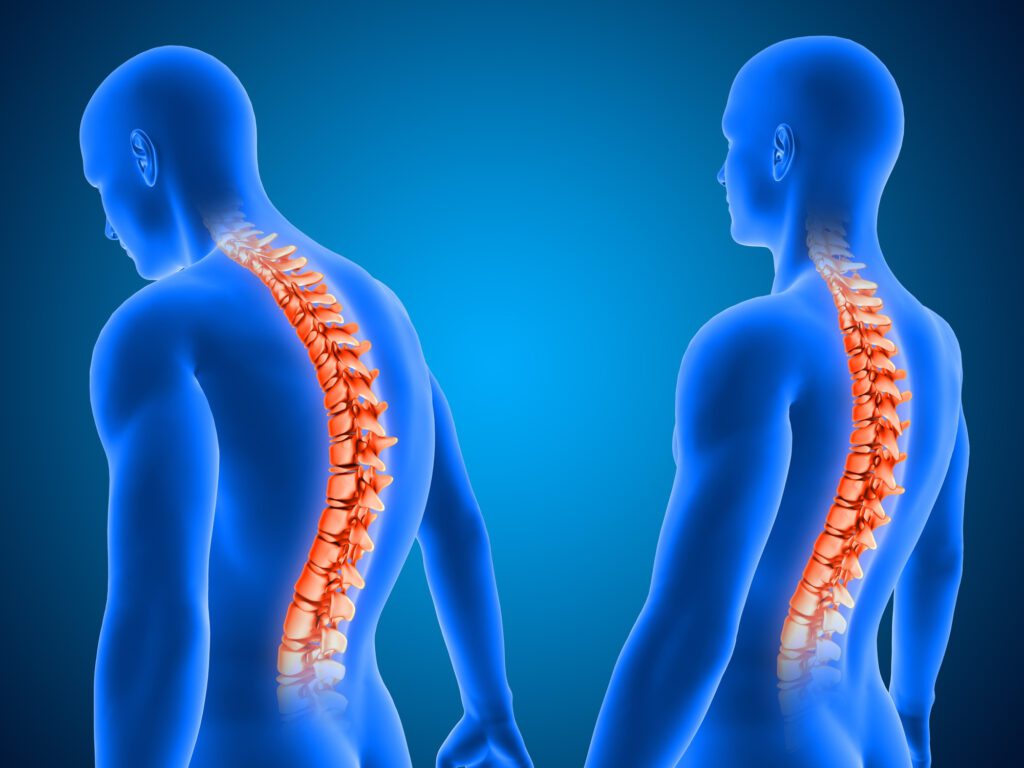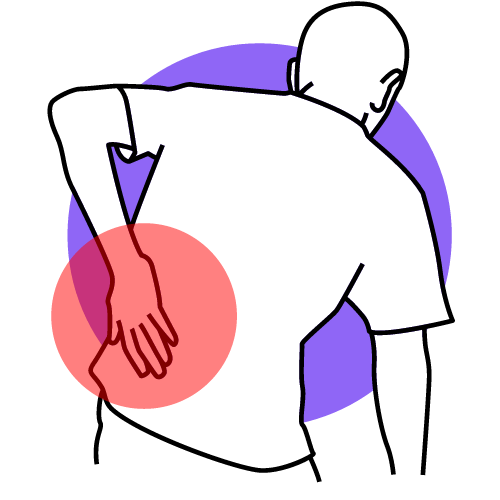A lesser-known connection between stress and sleep issues and their impact on back pain has been emerging in recent years.
As the prevalence of chronic back pain continues to rise, it’s crucial to understand the role that these factors play in exacerbating discomfort and limiting recovery.
In this blog post, we will delve into the complex relationship between stress, sleep, and back pain and explore how physical therapy can effectively address and alleviate these interconnected issues.
Whether you are experiencing mild discomfort or debilitating pain, understanding the impact of stress and sleep on your back health is crucial for finding true relief.
Join us as we explore the power of restorative physical therapy in tackling the root causes of back pain and reclaiming a pain-free life.
Key Takeaways:
- Physical therapy is an effective treatment for back pain: Through targeted exercises and manual therapy, physical therapy can help address the root cause of back pain related to stress and sleep issues.
- Emotional stress can manifest as physical pain: It’s essential to recognize the connection between emotional stress and back pain and to address both aspects in order to find relief.
- Improving sleep quality is crucial for managing back pain: Poor sleep can exacerbate back pain, so it’s essential to address sleep issues in conjunction with physical therapy for lasting relief.
- Ergonomic and lifestyle adjustments play a crucial role in back pain management. Making changes to posture, workstation setup, and daily habits can help prevent and alleviate back pain caused by stress and sleep issues.
- A multidisciplinary approach is often necessary: Collaborating with professionals in physical therapy, mental health, and sleep medicine can lead to a comprehensive and personalized treatment plan for tackling back pain from stress and sleep issues.
Understanding Back Pain

One of the most common ailments that affects people of all ages is back pain.
Whether it’s caused by stress, poor posture, or lack of sleep, back pain can significantly impact a person’s quality of life.
Understanding the anatomy and function of the spine, as well as the common causes and triggers of back pain, is essential in addressing and alleviating this discomfort.
Anatomy and Function of the Spine
Pain in the back often stems from the spine, a complex structure composed of vertebrae, discs, muscles, and ligaments.
The spine is responsible for supporting the upper body, protecting the spinal cord, and allowing for movement.
When any of these components are affected, it can result in discomfort and pain.
The alignment and health of the spine play a crucial role in preventing back pain.
The vertebrae and discs must be in proper alignment to avoid putting undue pressure on the nerves and surrounding tissues.
Common Causes and Triggers of Back Pain
Any number of factors can contribute to back pain, including poor posture, muscle strain, or injury.
Stress and lack of sleep can also exacerbate existing back issues, leading to chronic discomfort.
Identifying the root cause of the pain is crucial in developing an effective treatment plan.
The use of proper ergonomics and regular exercise can play a significant role in preventing and addressing back pain.
By strengthening the muscles that support the spine and maintaining a healthy lifestyle, individuals can reduce their risk of experiencing chronic discomfort.
The Role of Stress and Sleep in Back Pain

Clearly, stress and sleep play a crucial role in the development and exacerbation of back pain.
The impact of stress on the musculoskeletal system and the connection between sleep quality and back health are significant factors that should not be overlooked.
How Stress Affects the Musculoskeletal System
Stress can lead to tension and tightness in the muscles, particularly those in the back, shoulders, and neck.
When a person experiences chronic stress, the body’s natural response is to tighten and contract the muscles as a way of protecting itself from perceived threats.
This constant tension can lead to muscle imbalances, postural issues, and, ultimately, back pain.
In addition, stress can also contribute to inflammation in the body, which can further exacerbate musculoskeletal discomfort.
The Impact of Sleep Quality on Back Health
Stress and sleep are strongly interconnected, and poor sleep quality can significantly impact back health.
When a person does not get adequate rest, their body’s ability to repair and rejuvenate itself is compromised.
As a result, the muscles in the back may not receive the necessary recovery time, leading to increased stiffness and discomfort.
Moreover, poor sleep can also contribute to heightened stress levels, creating a vicious cycle that perpetuates back pain.
Health professionals and researchers have found a strong correlation between sleep quality and back pain.
Individuals need to prioritize sleep hygiene and establish healthy bedtime routines to promote better back health.
Investing in a supportive mattress and pillows, practicing relaxation techniques, and seeking professional help for sleep disorders are all critical steps in addressing the connection between sleep and back pain.
Physical Therapy for Back Pain Relief

To effectively address back pain caused by stress and sleep issues, physical therapy plays a crucial role in providing restorative relief.
By targeting the underlying causes of the pain and implementing personalized treatment plans, physical therapy aims to improve flexibility, strengthen the core muscles, manage pain, and reduce stress to alleviate back discomfort and enhance overall well-being.
Assessment and Personalized Treatment Planning
On the initial visit, a licensed physical therapist will conduct a comprehensive assessment to identify the specific sources of back pain and dysfunction.
Through a thorough evaluation of posture, range of motion, and muscle strength, the therapist will tailor a personalized treatment plan to address individual needs and goals, ensuring optimal recovery and pain relief.
Core Strengthening and Flexibility Exercises
Any effective physical therapy program for back pain incorporates core strengthening and flexibility exercises to improve muscle endurance, stability, and range of motion.
These exercises target the deep core muscles and aim to enhance spinal support, reduce tension, and improve overall flexibility to support long-term pain relief and prevent future back issues.
Plus, emphasizing proper posture and body mechanics during daily activities and exercise is essential for promoting spinal health and preventing recurring pain.

Manual Therapy Techniques
The implementation of manual therapy techniques, including joint mobilization, soft tissue mobilization, and myofascial release, can significantly contribute to back pain relief.
The skilled application of these techniques helps to improve joint mobility, reduce muscle tension, and enhance tissue flexibility, promoting faster recovery and restoring optimal function.
Back pain generated by stress and sleep issues can significantly benefit from these hands-on interventions, providing both immediate and long-term relief.
Pain Management and Stress Reduction Strategies
Flexibility in managing pain and stress plays a pivotal role in the physical therapy approach to back pain relief.
By integrating various pain management techniques, such as heat therapy, cold therapy, and relaxation exercises, along with stress reduction strategies, individuals can experience significant relief and improved quality of life.
To address the root causes of back pain, implementing strategies to reduce stress levels and enhance coping mechanisms is paramount to long-term relief and overall well-being.
Education on Sleep Hygiene and Ergonomics
Manual education on sleep hygiene and proper ergonomics is an essential component of physical therapy for back pain relief.
Guiding to create a sleep-conducive environment and promoting optimal body alignment during daily activities and rest is vital for improving sleep quality and reducing back discomfort.
Pain management and stress reduction through education on these factors are crucial elements in the comprehensive approach to addressing back pain originating from stress and sleep issues.
Complementary Therapies and Lifestyle Changes

Keep in mind that physical therapy is just one aspect of a comprehensive approach to tackling back pain caused by stress and sleep issues. Complementary therapies and lifestyle changes play a crucial role in promoting overall well-being and reducing the burden of back pain.
Integrating Mind-Body Practices
Practices such as yoga, meditation, and deep breathing exercises can help manage stress, improve sleep quality, and promote relaxation. These mind-body practices are known to have a positive impact on pain perception.
They can complement the effects of physical therapy in alleviating back pain.
Furthermore, mindfulness-based approaches have been shown to enhance self-awareness, leading to a better understanding of the mind-body connection and the potential triggers for back pain related to stress and sleep issues.
Nutritional Guidance for Inflammation Reduction
Inflammation is closely linked to various chronic pain conditions, including back pain.
Nutritional guidance for inflammation reduction involves making dietary changes that can help mitigate inflammation and promote overall health. Incorporating anti-inflammatory foods such as fatty fish, berries, leafy greens, and nuts can have a positive impact on reducing inflammation in the body.
Lifestyle modifications such as reducing consumption of processed foods, sugar, and alcohol and increasing intake of fruits, vegetables, and whole grains can also contribute to reducing inflammation and supporting the effects of physical therapy in addressing back pain.

Importance of an Active Lifestyle and Regular Exercise
Therapies aimed at promoting an active lifestyle and regular exercise are essential for managing back pain caused by stress and sleep issues.
Engaging in regular physical activity such as walking, swimming, or cycling can help enhance flexibility, strength, and overall physical conditioning, which are essential for supporting a healthy spine.
Active lifestyles also play a pivotal role in managing stress levels and improving sleep quality, both of which are integral factors in reducing the impact of back pain.
Additionally, regular exercise releases endorphins, the body’s natural painkillers, which can contribute to alleviating back pain and promoting a sense of well-being.
Restorative Relief – Tackling Back Pain from Stress and Sleep Issues Through Physical Therapy
Presently, it is evident that physical therapy plays a crucial role in addressing back pain caused by stress and sleep issues.
Through targeted exercises, manual therapy, and education, individuals can find relief and improve their quality of life.
It is essential for individuals suffering from back pain to seek out a qualified physical therapist who can tailor a treatment plan to address their specific needs.
By incorporating physical therapy into their routine, individuals can work towards reducing their pain, improving their mobility, and addressing the root causes of their back pain.
With the right approach and guidance, individuals can achieve restorative relief and break free from the cycle of chronic back pain caused by stress and sleep issues.

FAQ About Back Pain from Stress and Sleep Issues
What is restorative relief for tackling back pain from stress and sleep issues through physical therapy?
Restorative relief is a specialized approach that combines physical therapy techniques with stress and sleep management strategies to address and alleviate back pain caused by stress and sleep issues.
How does stress contribute to back pain?
Stress can cause muscle tension and tightness, leading to increased pressure on the spine and surrounding structures, resulting in back pain.
How does lack of sleep affect back pain?
Lack of sleep can lead to muscle fatigue and decreased ability to cope with pain, exacerbating back pain and making it more challenging to manage.
What techniques are used in restorative relief for back pain?
Techniques such as manual therapy, targeted exercises, relaxation training, and sleep management strategies are used to address both the physical and psychological aspects of back pain.
How long does it take to see results from restorative relief for back pain?
Results can vary depending on the individual and the severity of the back pain, but many patients experience noticeable improvement within a few weeks of starting the program.
Can restorative relief help prevent future back pain episodes?
Yes, by addressing the underlying issues of stress and sleep disturbances, restorative relief can help reduce the likelihood of future back pain episodes.
Is restorative relief suitable for all types of back pain?
Restorative relief is most effective for back pain related to stress and sleep issues, but it can also be beneficial for other types of back pain when used in combination with different treatment approaches.






